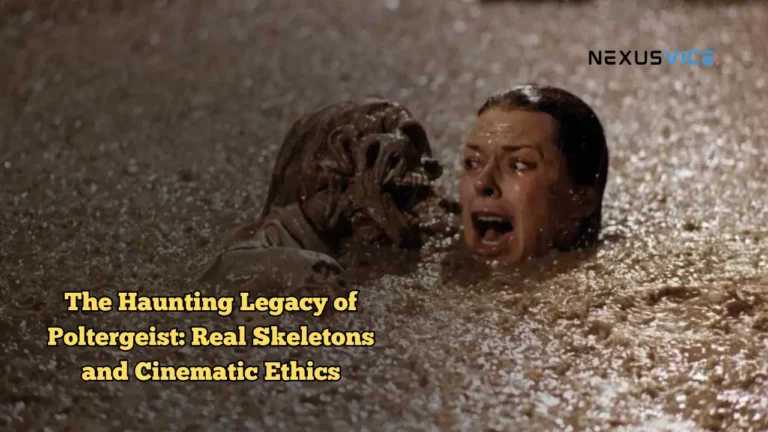Church of the Highlands Exposed: Controversy and Community
The Church of the Highlands, founded in 2001 by Pastor Chris Hodges in Birmingham, Alabama, has become a beacon for many seeking a contemporary worship experience.
With its rapid expansion and modern approach, the church has drawn tens of thousands of attendees across its multiple campuses.
However, recent controversies have cast a shadow over its reputation, raising questions about its financial practices, leadership structure, and social impact. This article delves into these issues, exploring the allegations, the church’s response, and the broader implications for religious institutions.
The Journey from Humble Beginnings to Megachurch Status
The Church of the Highlands started with a simple mission: to help individuals find and follow Jesus. From its humble beginnings, it quickly grew into a megachurch with over 20 campuses across Alabama and beyond.
This growth was fueled by dynamic services, contemporary worship music, and a strong emphasis on community service. The church’s innovative use of technology and social media has allowed it to connect with a younger demographic, making its services accessible to a broader audience.
Table: Church of the Highlands Growth Milestones
| Year | Milestone | Description |
|---|---|---|
| 2001 | Founding | Established by Pastor Chris Hodges in Birmingham, Alabama. |
| 2005 | First Campus Expansion | Opened additional campuses to accommodate growing numbers. |
| 2010 | Online Services Launched | Began streaming services online to reach a wider audience. |
| 2015 | 10th Campus Opened | Continued expansion with the opening of the 10th campus. |
| 2020 | Community Outreach Programs Expanded | Increased focus on community service and outreach efforts. |
Unpacking the Allegations: Financial Mismanagement and More
Despite its success, the Church of the Highlands has faced serious allegations that threaten its reputation. Critics have accused the church of financial mismanagement, pointing to lavish expenditures that seem to benefit individual leaders rather than the church’s mission. Questions have been raised about the church’s real estate investments and how funds are allocated. This has led to a broader conversation about the need for transparency and accountability in religious organizations.
The church’s governance structure has also come under scrutiny. With significant power concentrated in the hands of a small leadership team, including Pastor Chris Hodges, concerns about accountability and transparency have emerged. Critics argue that decisions often benefit the leadership rather than the congregation, fueling suspicions of self-serving agendas.
Leadership and Governance: A Centralized Power Structure
The leadership model at the Church of the Highlands places significant power in a small group, which includes Pastor Chris Hodges. This centralized approach has led to concerns about accountability and transparency. Critics argue that decisions often benefit the leadership rather than the congregation, raising questions about the church’s priorities and ethical standards.
The church has defended its governance structure, emphasizing the importance of strong leadership in guiding its mission and growth. However, the lack of broader input in decision-making processes has fueled suspicions of self-serving agendas within the leadership. This has led to calls for more inclusive governance practices that reflect the diverse perspectives of the congregation.
Financial Transparency: A Call for Greater Accountability
Financial transparency is a critical issue for the Church of the Highlands. The church’s financial model relies on donations, fundraising events, and merchandising. Despite its claims of responsible fund allocation, critics argue that the lack of detailed financial reporting fuels skepticism about how donations are utilized. Calls for more transparent financial practices, including audited financial statements, have been made to restore trust and ensure accountability.
The church’s financial practices have come under scrutiny due to reports of lavish spending on facilities and amenities that appear to benefit the leadership more than the congregation. Critics have pointed to expensive real estate acquisitions and luxurious amenities as evidence of misplaced priorities. The church’s reluctance to provide detailed financial disclosures has only intensified these concerns, leading to demands for greater transparency and accountability.
Social Impact and Cultural Critiques
The Church of the Highlands is known for its extensive community service and outreach programs, which have had a positive impact on many communities. However, its stance on social issues, such as racial equality and LGBTQ+ rights, has been critiqued. The church faced backlash in 2020 when Pastor Hodges’ social media activity raised concerns about racial insensitivity. While the church has taken steps to address these issues, they remain a point of contention.
The church’s approach to social issues has been characterized by a conservative stance that some view as out of touch with the evolving cultural landscape. Critics argue that the church’s positions on issues like LGBTQ+ rights and racial equality are not reflective of the diverse congregation it serves. This disconnect has led to tensions within the church community, with some members feeling alienated by the church’s stance on these important social issues.
Community and Member Experiences: A Spectrum of Perspectives
The controversies have deeply resonated within the Church of the Highlands’ community, leading to a complex mix of emotions among its followers. For many, the revelations have been a source of confusion and heartache, shaking the foundation of their faith and trust in the church’s leadership. This has prompted introspection within the congregation and spurred a broader dialogue about the relationship between faith and leadership accountability.
Personal stories from current and former members highlight a range of experiences, from deep spiritual fulfillment to feelings of betrayal and disappointment. Some members have expressed unwavering support for the church, citing its positive impact on their lives and communities. Others, however, have chosen to distance themselves from the church, feeling disillusioned by the controversies and the church’s response. These diverse perspectives underscore the complex nature of the church’s relationship with its congregation.
The Lodge at Grants Mill: A Center of Controversy
A focal point of controversy is The Lodge at Grants Mill, a meditation center intended to aid pastors in need of restoration. Critics have questioned its purpose and operations, suggesting it may serve as a retreat for leaders involved in scandals. The church has defended the Lodge as a legitimate part of its mission to support clergy, but the debate continues.
The Lodge has been portrayed by the church as a sanctuary for spiritual renewal and personal growth, offering a peaceful environment for reflection and healing. However, critics argue that its exclusivity and lack of transparency raise questions about its true purpose. The church’s reluctance to provide detailed information about the Lodge’s operations has fueled suspicions of impropriety, prompting calls for greater transparency and accountability.
The Church’s Response: Denials and Reforms
In response to the allegations, the church’s leadership has issued statements denying any wrongdoing and reaffirming their commitment to ethical governance and financial responsibility. They have highlighted existing accountability measures, such as financial audits and oversight by a board of directors, as evidence of their dedication to transparency. Despite these efforts, skepticism remains among critics and some community members, underscoring the need for independent verification of the church’s claims.
The church has also taken steps to address concerns about its social impact, launching initiatives aimed at promoting diversity and inclusion within its community. These efforts have been met with mixed reactions, with some applauding the church’s commitment to change, while others remain skeptical of its sincerity. The church’s ability to navigate these challenges will be crucial in determining its future trajectory and its relationship with its congregation.
Conclusion: Navigating the Path Forward
The Church of the Highlands stands at a crossroads, facing significant challenges as it navigates the controversies that have emerged. While its impact on the community and its growth as a religious institution are undeniable, the allegations of financial and ethical misconduct cannot be ignored. The future of the church will depend on its ability to address these issues transparently and rebuild trust with its congregation. By committing to transparency, accountability, and open dialogue, the Church of the Highlands can navigate this storm and emerge stronger, continuing to serve its community and uphold its mission.
This comprehensive examination provides a detailed look at the controversies surrounding the Church of the Highlands, offering insights into the challenges faced by large religious organizations in maintaining ethical standards and transparency. The church’s journey serves as a reminder of the importance of accountability and integrity in leadership, as well as the power of community in shaping the future of religious institutions.

Welcome to our blog! My name is Yuvraj Kore, and I am a blogger who has been exploring the world of blogging since 2017. It all started back in 2014 when I attended a digital marketing program at college and learned about the intriguing world of blogging.




